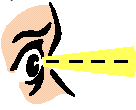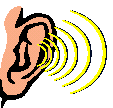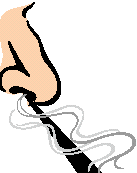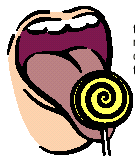BACKGROUND:
The human body is a beautifully engineered
structure. The body has a general plan. We all have arms, legs,
a head, ears, and eyes on the outside of our bodies. We also have
similar parts on the inside of our bodies. We all have one heart,
two lungs, one brain, two kidneys, and one stomach.
Understanding and learning about the human
body is a complicated subject. If you just take an organ or system
and emphasize its function, you must tell students how the system fits
into the rest of the body's functions.
 You can introduce the parts of the body, both
internal and external, by using the organs that allow humans to operate
their senses. The nervous system controls the actions and sensations
of all the parts of your body by using a complex network of nerves, which
carry electrical signals to and from the brain. The brain and spinal
cord compose the central nervous system, acting as the central clearing
house. One part of your nervous system controls your body's relationship
to the external environment (somatic) and another part controls your
You can introduce the parts of the body, both
internal and external, by using the organs that allow humans to operate
their senses. The nervous system controls the actions and sensations
of all the parts of your body by using a complex network of nerves, which
carry electrical signals to and from the brain. The brain and spinal
cord compose the central nervous system, acting as the central clearing
house. One part of your nervous system controls your body's relationship
to the external environment (somatic) and another part controls your body's
internal organs (autonomic). The human body has five major senses
which operate to gather information from the world around us, sight, hearing,
smell, taste, and touch. Any stimulus to one of the sense areas is
detected by sensory nerves and is sent to the brain for interpretation.
body's
internal organs (autonomic). The human body has five major senses
which operate to gather information from the world around us, sight, hearing,
smell, taste, and touch. Any stimulus to one of the sense areas is
detected by sensory nerves and is sent to the brain for interpretation.
The eye (an organ) acts like a camera.
Human vision is stereoscopic, which means seeing in three dimensions.
When we look at objects two slightly different images are transmitted to
the brain, and are merged so the brain can interpret the image that we
see. This allows us to see objects which stand away from the background,
not flat like you see in a photograph.
 The
ear (an organ) is specially made to receive
sound waves that are sent out by vibrating objects and converts them into
sensations we call sound.
The
ear (an organ) is specially made to receive
sound waves that are sent out by vibrating objects and converts them into
sensations we call sound.
The nose contains the nostrils and organs
of smell. The stimulus that excites smell is chemical, for example onion
and garlic give off different chemical sensations.
The tongue is the organ that controls taste.
Taste is also a chemical stimulus. Things to be tasted must touch
the tongue, sometimes, taste become combined with smell because of the
connection between the mouth and the back of the nose.
Touch is created by stimulating the skin (the
largest organ of the body) through the sensations of touch, pressure, pain,
heat and cold.
 PROCEDURE:
PROCEDURE:
- Read or have children read
aloud My Five Senses by Aliki. If you reading to the children have
them fill in the parts of the story as you read to them.
- Hand out the worksheet and have the
students draw themselves and then label their sense organs on their face.
You may have to show students how to draw curly or straight hair or other
modifications that can transform this picture into a picture of themselves.